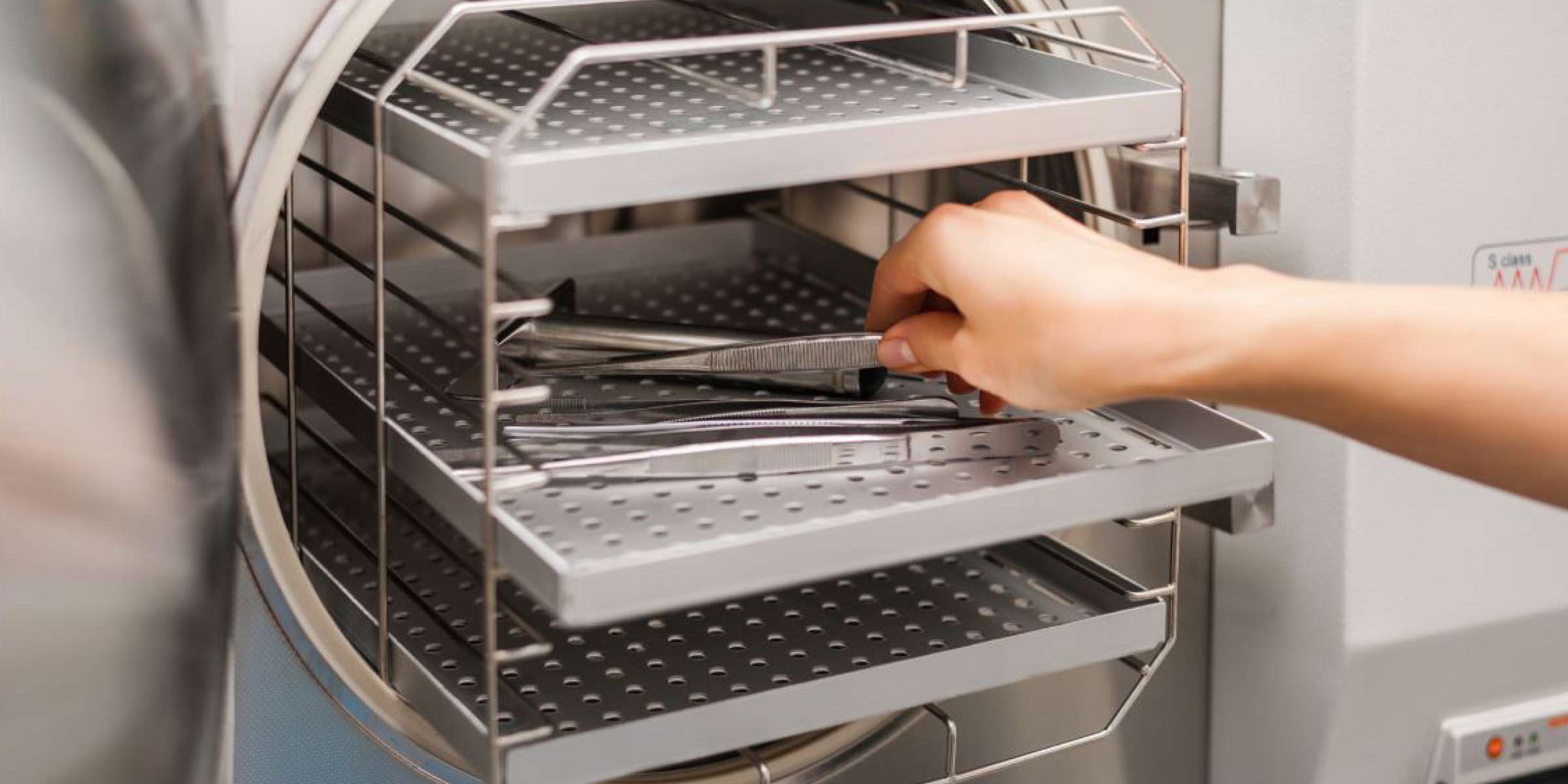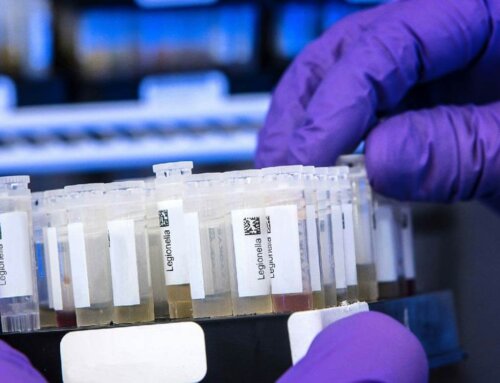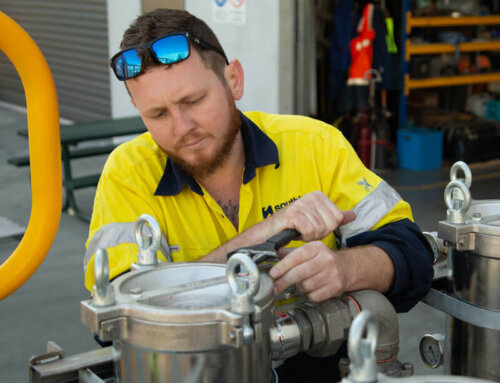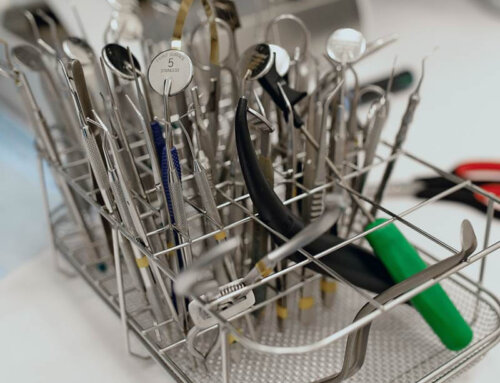Date: 15/10/2019
Updated: 07/05/2024
Read Time: 14 min
Author: Matthew Cox

Key points:
- A risk-based Quality Management System (QMS) is crucial for ensuring the quality of water used in reprocessing Reusable Medical Devices (RMDs), as water contaminants can facilitate bacterial growth and damage equipment.
- Benefits of a risk-based QMS include increased efficiency, improved RMD reprocessing procedures, waste reduction, cost savings, and enhanced staff training and empowerment.
- Implementing a QMS requires considerations such as patient focus, leadership, engagement, process approach, improvement methodologies, evidence-based decision-making, and relationship management, aligning with ISO 9001 principles.
Introduction
A Quality Management System (QMS) is a formalized system that documents processes and procedures to ensure quality and consistency when achieving an organization’s responsibility.
In Healthcare, a QMS is a series of operational processes that are aligned with the hospital’s responsibility of delivering high quality care to ensure that their patients never acquire an avoidable hospital infection.
The quality of water used to reprocess RMDs plays a critical role in the prevention of patient infection as water contaminants can provide a perfect environment for the growth and the proliferation of harmful bacteria. Water contaminants not only can damage the Washer-Disinfectors, Sterilisers and the RMDs but can cause spotting and staining which can protect the harmful bacteria from disinfection.
An infection control specialist in water understands what’s involved in a well-designed and maintained purified water plant to consistently and continuously control bacteria/biofilm and endotoxins, but often Hospital management and CSSD teams need to build their understanding of what is required. Adopting a QMS for water used in reprocessing of RMD’s will help to fill the knowledge gap in meeting not only the regulatory requirements but also taking a proactive approach in safeguarding the Australian healthcare system.
For the reprocessing of Reusable Medical Devices (RMDs), a risk based QMS helps to co-ordinate and direct the CSSD’s activities to achieve good patient outcomes.
Benefits of a risk based QMS
A QMS offers the hospital the follow benefits
- Increases a CSSD’s effectiveness and efficiency on a continuous basis
- Improves the procedures in reprocessing RMDs
- Reduces waste by increasing the longevity of the RMDs
- Lowers costs by using purified water – this is where the water low in mineral and bacteria content reduces chemical consumption and increases the efficacy of the CSSD
- Identifies opportunities where staff can be trained to work more efficiently and be empowered to manage their time to do so
- Allows for the CSSD to provide services in the most cost and resource efficient manner. This in turn helps creates room for expansion, growth, and profit for the hospital.
- It communicates a readiness to produce consistent results – when processes are defined and controlled it prevents mistakes, reducing costs which continually improving upon the hospital’s offerings.
The best QMS model for water
There are numerous QMS which can be adopted. ISO 9001 quality management principle sets out the fundamental beliefs, norms, rules and values that are accepted as true. It can be used for managing the risks associated with water in the reprocessing of RMDs.
A risk based QMS for water used in the reprocessing of RMDs can be applied by following the 7 principles:
-
- Patient focus
- Leadership
- Engagement of people
- Process approach
- Improvement
- Evidence-based decision making, and
- Relationship management
1. Patient Focus
ISO 9001 states, ‘The primary focus of quality management is to meet customer requirements, and to strive to exceed customer expectations.’
In Healthcare, our “customers” are the patients. In order to focus on patient care, we need to understand the types of surgical procedures implemented within each hospital as it determines the type of RMD’s required. Hence the guidelines for their reprocessing and the ‘disease vector’. Hence the guidelines for their reprocessing and the required water quality should be adopted in the QMS.
For example, endoscopy uses thermolabile endoscopes. As these can’t be steam sterilised, it’s critical that water containing < 10 cfu/100 ml of TVC with 0 pseudomonas and A typical mycobacterium is used for cleaning, disinfecting and rinsing.
It’s also important to understand the “disease vectors” in this application. In this case they are the design of each RMD and the quality of water used for their reprocessing.
Understanding water quality requirements allows us to plan and budget for the type of purification system that will meet patient needs and expectations.
2. Leadership
If the hospital’s mission is to meet the regulatory guidelines and standards in place, it needs to establish a culture of trust and integrity with all stakeholders, including surgeons and the patients.
Strong leadership drives that trust through the ability to passionately communicate the hospital’s mission, vision, strategy, policies and processes in meeting the regulatory standards for patient safety.
Leadership must:
- Encourage CSSD’s commitment to water quality
- Ensure management at all levels set positive examples for CSSD teams
- Provide teams the necessary resources, training and authority to act with accountability
- Influential leadership teams inspire, encourage and recognise people’s contribution in following the regulatory standards
Leaders also need to be armed with the right knowledge. There are critical issues that they need to understand, such as how the incoming water quality meets the regulatory standards and effective patient care. This requires analysis of the incoming town water quality. Without this knowledge, processes can’t be implemented to control the contaminants and the associated risks.
Understanding the incoming town water supply means knowing the effects water contaminants have on the RMDs. Some critical points to understand:
- Water hardness causing elements, such as Calcium and Magnesium, result in calcification, deposits and staining on WDs, sterilizers and RMDs
- Chemical deposits protect microorganisms from disinfection and sterilisation by acting as a physical barrier
- Heavy metals such as Iron, Manganese and Copper results in dark discolouration and deposits in sterilizers, WDs and RMDs
- Chloride in the presence of oxygen causes pitting corrosion and disinfection can be less effecting on areas where pitting may have occurred
- High levels of Reactive Silica in combination with high temperature can cause permanent yellowish brown to purplish blue discoloration of Stainless Steel. This is commonly known as the ‘rainbow effect’
- Spotting is also a common problem due to the generation of Silicic acid
Unless the hospital conducts its own town water analysis the incoming Reactive Silica level is unknown because this information is never published by local Water Corporations. It is worth noting that the Australian Drinking Water Guidelines stipulates 80 mg/l as the limit for Silica as Silica does not pose any health risks. Unfortunately, in most cases, the problem becomes evident after the damage has already been done on RMDs and the CSSD equipment.
3. Engagement
How do we get people to engage with a risk based QMS approach? As with everything, it starts from the top, with leadership creating a culture where hospital staff and contractors understand that meeting regulatory guidelines means positive patient outcomes. Everyone needs to know how their individual contribution will help achieve that.
Facilitating open discussions, sharing knowledge and experience is key across the hospital as it enhances trust and collaboration where teams share the same values. This creates a culture of engagement.
To get this level of engagement with external contractors, here are some discussion points to have:
If you have an existing water purification plant, the following questions apply
- Is the water purification plant designed to meet both chemically and microbially suitable water for patient care?
- Does the supplier of the water purification plant have experience in designing water purification plant in Healthcare where both chemically and microbially safe water can be achieved?
- Does the existing water purification plant design incorporate redundancy to meet your facility demand? Will the design for redundancy interfere in achieving microbially safe water for patient care?
- Does the existing system incorporate automatic disinfection?
This is critical for the Hospital to be in control of bacteria / biofilm growth within the purified water plant
- Will the supply water be via a ringmain, and if so, what material is it constructed from?
If you require a new water purification plant, the following questions apply
- Does the supplier have experience in designing water purification plants in Healthcare where both chemically and microbially safe water can be achieved?
- Does the plant design incorporate of redundancy to meet hospital demand? Ensure their design does not compromise microbial water quality.
- Can the automatic disinfection be activated without user intervention?
- Will the supply water be via a ringmain? If so, what is their experience in designing a suitable ringmain to consistently and continuously supply chemically and microbially safe water?
- Does the water purification plant provide data logging for traceability?
Whether you have an existing plant or require a new one, obtain references and speak to other customers using the same plant design and assess their experience to determine if your contractor is an expert in this field or are ‘learning on the job’
4. Process
There are two types of scenarios a hospital would need to develop a process approach for a water purification plant in the reprocessing of RMD’s:
1) Process Approach for an Existing Water Purification Plant
The process approach for purchasing a new water purification plant requires a water purification plant that meets chemical and microbial requirements. An example of such plant is given below.
This plant has the necessary processes to produce consistent and predictable results. An automatic disinfection process that allows the system to disinfect the ringmain, even when the system is “clean” or is still compliant, will safeguard your CSSD in the unforeseen event of microbial contamination from the town water supply. ISO 9001 states the “Consistent and predictable results are achieved more effectively and efficiently when activities are understood and managed as interrelated processes that function as a coherent system.” The following actions are what you need to take when purchasing a new RO to achieve consistent and predictable results:
- Define objectives of the system and processes necessary to achieve compliance
- Establish authority, responsibility and accountability for managing the RO system to meet the regulatory guidelines and standards in place
- Understand the hospital’s capabilities and determine resource constraints prior to action – for example, the geographical location of the hospital should be considered
- Determine the RO system’s adaptability to variation in the incoming town water quality
- Manage processes and their interrelations as a system to achieve the hospital’s quality objectives, both effectively and efficiently
- Ensure the necessary information is available to operate and improve the processes and to monitor, analyse and evaluate the performance of the overall system
- Manage risks that can affect the product water quality of the RO system and its effect on the quality management system.
2) Process Approach for a New Water Purification Plant
The process approach for purchasing a new water purification plant requires a water purification plant that meets chemical and microbial requirements. An example of such plant is given below.
This plant has the necessary processes to produce consistent and predictable results. An automatic disinfection process that allows the system to disinfect the ringmain, even when the system is “clean” or is still compliant, will safeguard your CSSD in the unforeseen event of microbial contamination from the town water supply. ISO 9001 states the “Consistent and predictable results are achieved more effectively and efficiently when activities are understood and managed as interrelated processes that function as a coherent system.” The following actions are what you need to take when purchasing a new RO to achieve consistent and predictable results:
- Define objectives of the system and processes necessary to achieve compliance
- Establish authority, responsibility and accountability for managing the RO system to meet the regulatory guidelines and standards in place
- Understand the hospital’s capabilities and determine resource constraints prior to action – for example, the geographical location of the hospital should be considered
- Determine the RO system’s adaptability to variation in the incoming town water quality
- Manage processes and their interrelations as a system to achieve the hospital’s quality objectives, both effectively and efficiently
- Ensure the necessary information is available to operate and improve the processes and to monitor, analyse and evaluate the performance of the overall system
- Manage risks that can affect the product water quality of the RO system and its effect on the quality management system.
5. Improvement
Using improvement methodology, including educating and training teams, will help to establish non-compliance rectification. When using an action limit, if the results are indicating a deterioration of performance, implement a methodology to rectify it, for example
-
- Activate an automatic disinfection process to control bacteria
- If improvement in water quality is not achieved, organise a site visit by a service provider
Improvement methodology will help to track and review results of the rectification process.
If the adopted improvement methodology doesn’t result in the chemical and microbial water quality requirements to achieve good patient outcomes, consider a gap analysis. This should include engaging an external consultant experienced in Healthcare to evaluate the existing water purification design and an action plan to achieve good patient outcomes.
6. Evidence Based Decision making
The decision-making process based on the analysis and evaluation of water data and information is more likely to produce desired results.
The performance of the water purification plant should be monitored by taking samples at the correct user points. To achieve accurate results, water sampling should be done at sanitary sampling valves by a person trained to conduct sampling using a documented and validated process.
Determine, measure and monitor key indicators to demonstrate the water purification plant’s performance. Make sure all data is shared with relevant people and that it’s accurate, reliable and secure by using a NATA accredited laboratory. This includes ensuring the people who analyse and evaluate the data are competent. Allow decisions to be based on evidence, balanced with experience and intuition.
7. Relationships
Maintaining and managing a good relationship with leadership, your teams and your service provider is important for success. Measure the performance of the RO plant and provide performance feedback to relevant parties, as appropriate, to determine the best approach in dealing with the situation.
Each piece of the water quality jigsaw puzzle is managed by different stakeholders in the hospital. In the event of non-compliance (chemical or microbial), share the information with relevant parties to determine a mutually agreed outcome. Without all the pieces of the jigsaw puzzle together, the picture is incomplete. Effectively managing relationships between all stakeholders helps to get a complete picture.
Sydney Water: Best Practice
The procedures documented above are a similar QMS that has been adopted by reputable water corporation, Sydney Water.
Sydney Water uses The Australian Drinking Water Guidelines Framework for the Management of Drinking Water Quality based on a preventive risk management approach. This framework encompasses all the steps in water production from the catchment to the customer.
Sydney Water works collaboratively with WaterNSW to ensure that the best possible water quality is supplied to their customers. They apply a multi-barrier approach to ensure the water supply is safe. Some of the steps or ‘barriers’ they use to manage water quality are:
-
- Protecting water catchments (eg lakes, rivers and reservoirs)
- Selecting the best available source of water
- Filtering the water at water filtration plants
- Adding chlorine at the water filtration plants and in the network to ensure your water is free of harmful pathogens
- Then they add fluoride to support dental health
Sydney Water monitor these different steps constantly at critical control points to ensure that drinking water remains safe and of high quality. They also monitor water quality at different localities to verify that these barriers are working.
Conclusion
The example proven and tested risk based QMS includes processes to remove or reduce impurities, monitoring the qualities of the source water, the product water at their pipe network as well as at selected user points.
To successfully develop a QMS for water used in reprocessing of RMDs, monitoring of the incoming town water must be implemented. Then purification processes with multiple barriers should be implemented, followed by a process of monitoring at the inlet to the ringmain, at the ringmain return (which is our supply network) and at some selected user points, depending on its performance.
It’s important hospitals should adopt a risk based QMS because implementing a quality management system affects every aspect of a hospital’s performance. Correct design of a water purification plant, water quality monitoring and reporting are critical in developing a risk-based Quality Management System for water used in reprocessing of RMDs.
Got questions? We have answers.
Get in touch with our team on 1800 656 771 or email Matt.





